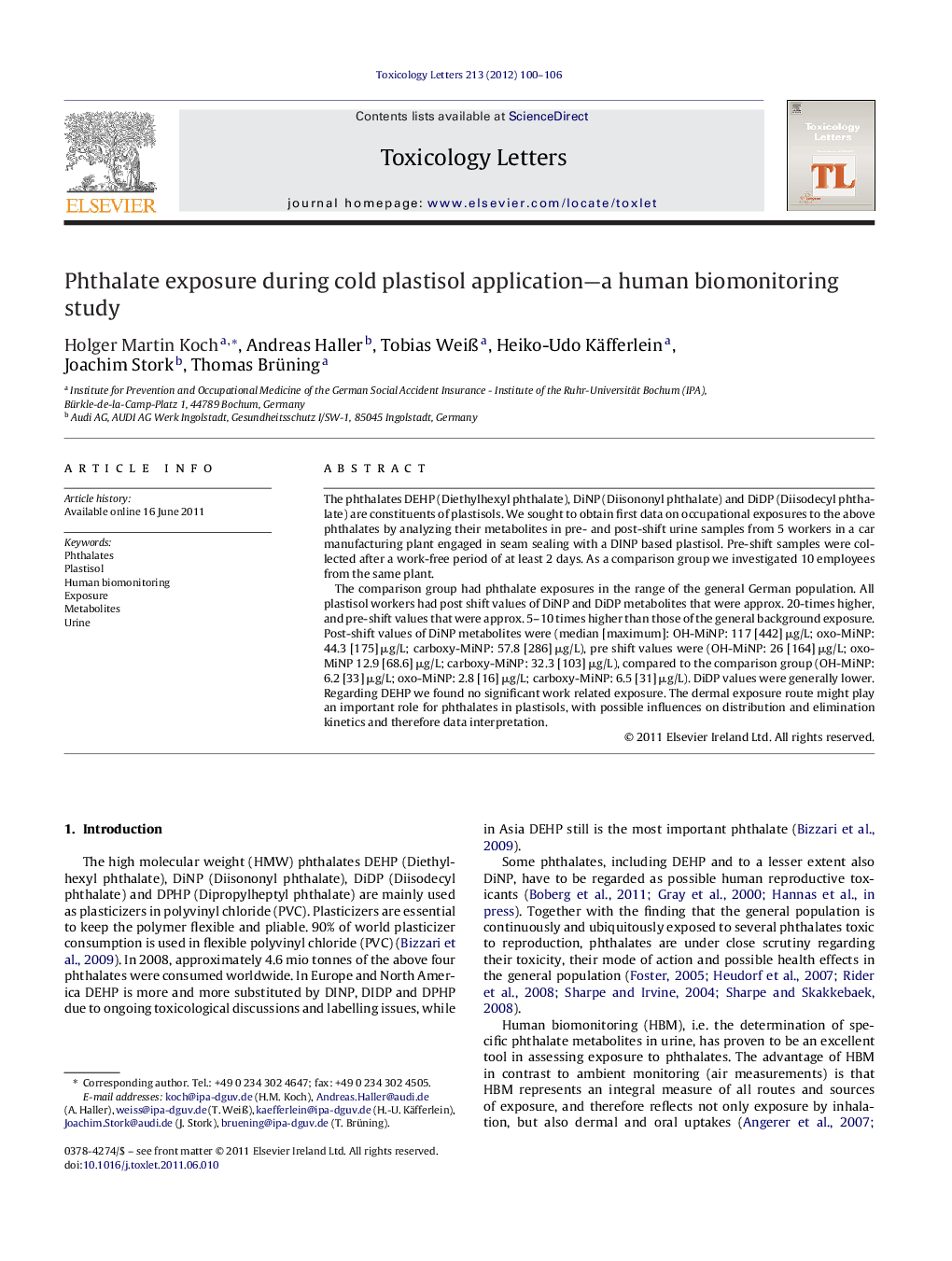| Article ID | Journal | Published Year | Pages | File Type |
|---|---|---|---|---|
| 2599489 | Toxicology Letters | 2012 | 7 Pages |
The phthalates DEHP (Diethylhexyl phthalate), DiNP (Diisononyl phthalate) and DiDP (Diisodecyl phthalate) are constituents of plastisols. We sought to obtain first data on occupational exposures to the above phthalates by analyzing their metabolites in pre- and post-shift urine samples from 5 workers in a car manufacturing plant engaged in seam sealing with a DINP based plastisol. Pre-shift samples were collected after a work-free period of at least 2 days. As a comparison group we investigated 10 employees from the same plant.The comparison group had phthalate exposures in the range of the general German population. All plastisol workers had post shift values of DiNP and DiDP metabolites that were approx. 20-times higher, and pre-shift values that were approx. 5–10 times higher than those of the general background exposure. Post-shift values of DiNP metabolites were (median [maximum]: OH-MiNP: 117 [442] μg/L; oxo-MiNP: 44.3 [175] μg/L; carboxy-MiNP: 57.8 [286] μg/L), pre shift values were (OH-MiNP: 26 [164] μg/L; oxo-MiNP 12.9 [68.6] μg/L; carboxy-MiNP: 32.3 [103] μg/L), compared to the comparison group (OH-MiNP: 6.2 [33] μg/L; oxo-MiNP: 2.8 [16] μg/L; carboxy-MiNP: 6.5 [31] μg/L). DiDP values were generally lower. Regarding DEHP we found no significant work related exposure. The dermal exposure route might play an important role for phthalates in plastisols, with possible influences on distribution and elimination kinetics and therefore data interpretation.
• We determine phthalate exposure of workers applying a DiNP (Diisononyl phthalate) based plastisol. • Urinary DiNP metabolite levels are significantly elevated in these workers compared to general background exposures. • The workers already show elevated metabolite levels in pre-shift urine samples. • We assume that the dermal exposure route plays an important role in the application of phthalate-based plastisols. • Elimination kinetics are probably different after dermal compared to oral exposure.
